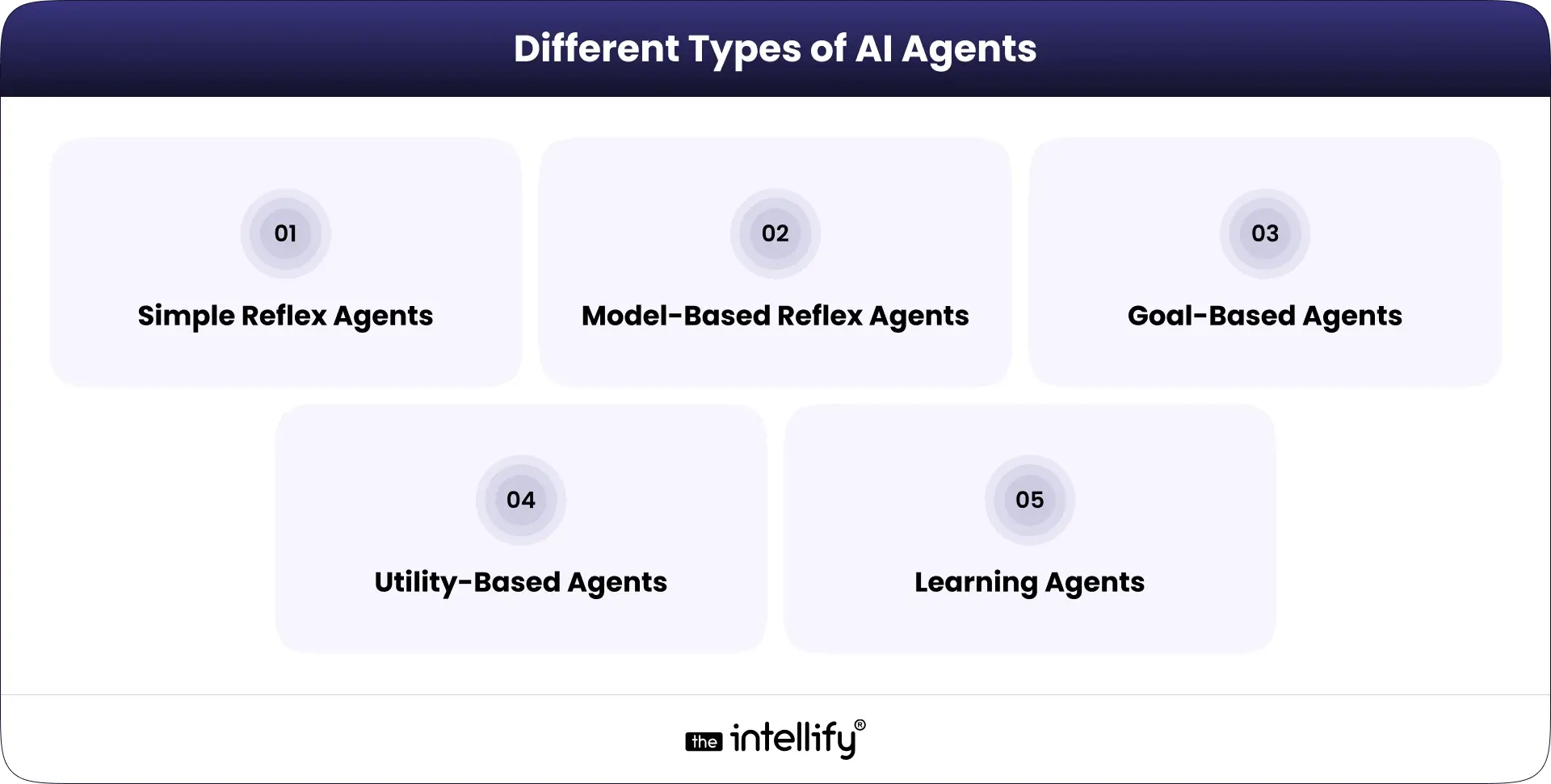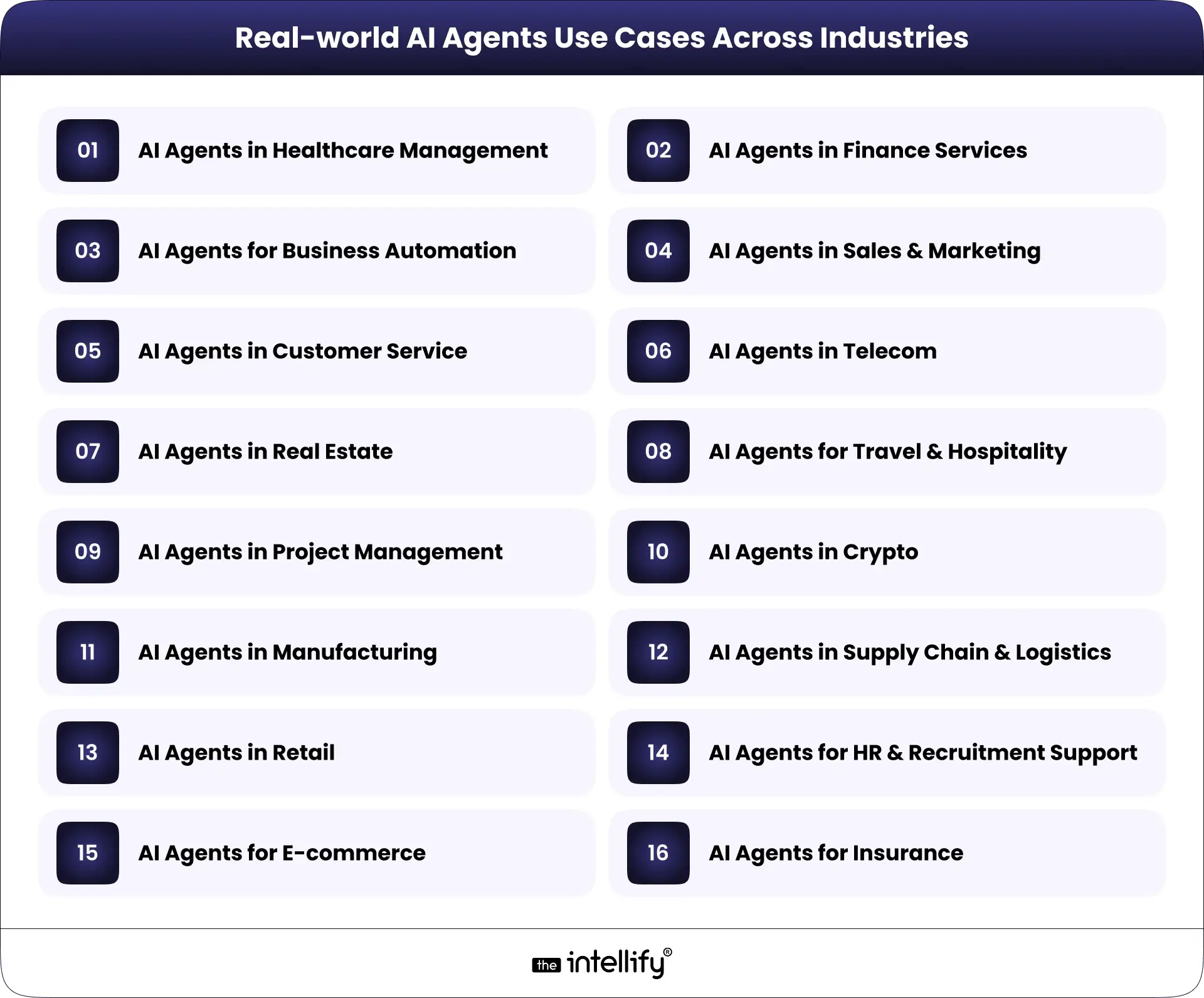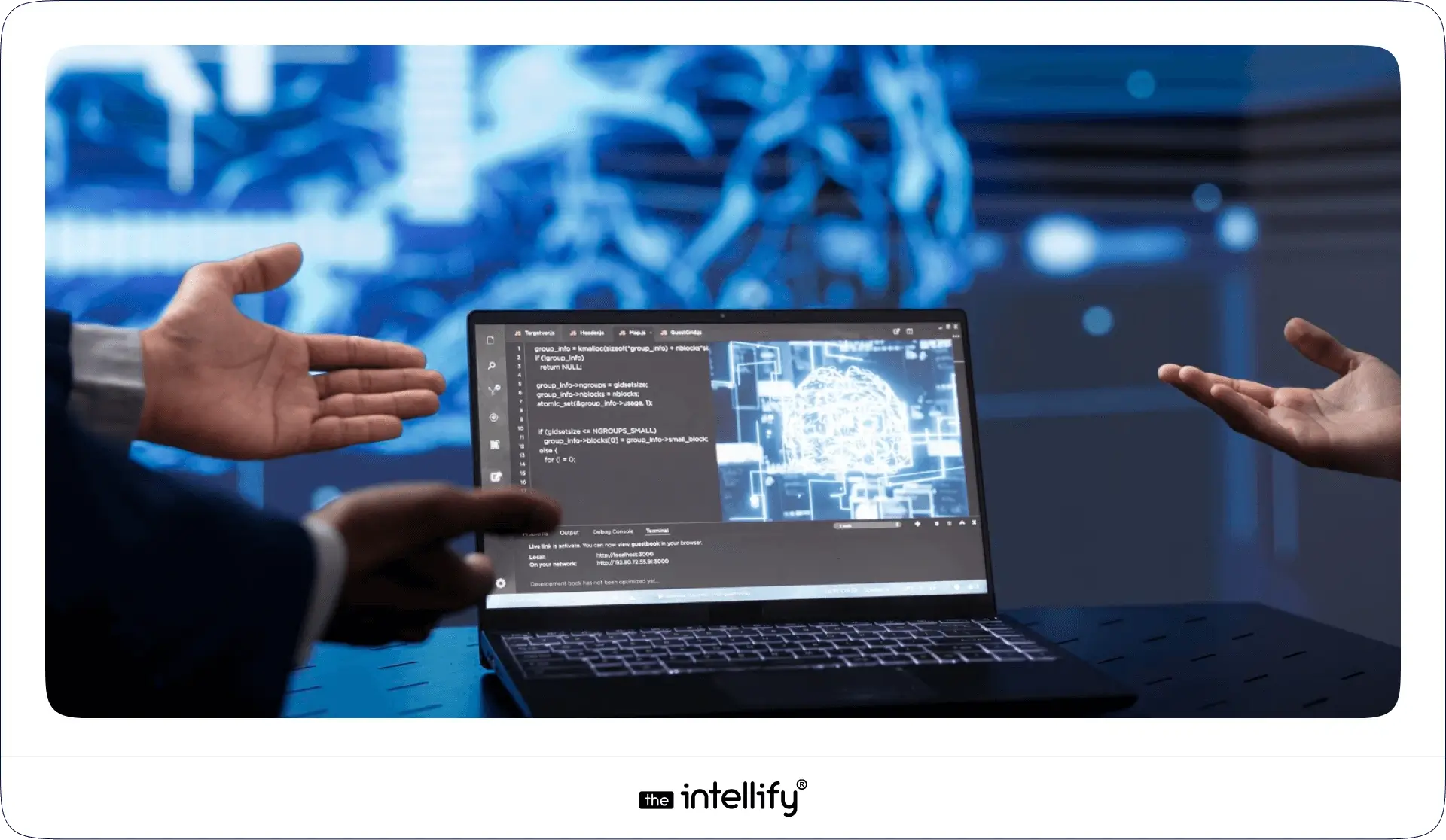Summary
This blog explores how AI agents in healthcare are transforming diagnosis, patient care, and operational workflows. In this comprehensive guide, we will explore how AI agents are impacting the healthcare landscape, their applications, benefits, real-world use cases, development costs, and the future they promise.
In recent years, the healthcare industry has undergone a massive transformation driven by digital technologies. The integration of AI agents in healthcare is one of the most revolutionary innovations. These smart, self-driving systems are changing how doctors and nurses diagnose illnesses, provide care, and interact with patients. AI agents are changing the game in many ways, from early diagnosis to remote monitoring and personalized care.
The Rise of AI Agents in Healthcare

Artificial Intelligence (AI) has moved beyond labs and academic discussions. AI agents have given healthcare providers the ability to handle massive amounts of data, automate tasks that are done over and over again, and make better clinical decisions.
AI agents are software entities that can make decisions and do tasks on their own. These systems are designed to act like people and work well with patients, doctors, medical devices, and healthcare systems.
Why AI Agents Are Becoming More Popular in Healthcare:
- Healthcare data is growing at an explosive rate.
- Need for decisions based on data in real time
- Increased demand for personalized medicine
- Shortage of healthcare professionals
- Advancements in machine learning and natural language processing
How AI Agents Are Transforming the Healthcare Industry?
AI agents give healthcare systems new powers by automating tasks, making predictions about outcomes, and giving real-time advice. Their job is quickly growing from doing things behind the scenes to taking care of patients directly.
1. Enhanced Diagnostic Accuracy
AI agents look at patient data, symptoms, imaging, and medical history to help make a diagnosis or even make one themselves. This lowers the chance of making a mistake and speeds up the process of finding a diagnosis.
2. Operational Efficiency
AI agents streamline administrative tasks like scheduling appointments, billing for medical services, and processing claims easier. This lets medical staff concentrate on taking care of patients.
3. Personalized Care Plans
AI agents can suggest personalized treatment plans, medication schedules, and lifestyle changes by looking at the profiles of each patient.
4. Continuous Patient Engagement
AI-powered chatbots and voice assistants are available 24/7 to help patients remember to take their medicine, give them advice on how to care for themselves after surgery, and answer health-related questions.
Agentic AI in Healthcare: Explained
Traditional AI systems can react to inputs, but they can’t make decisions. Agentic AI is a new step forward in technology. It makes decisions on its own, interacts with the world, and learns from what happens.
Agentic AI systems in healthcare aren’t just tools; they act more like team members. These agents work on their own, continuously learning from patient interactions and outcomes. They don’t just respond, they act. Their goal is to make healthcare better by making smart, intelligent decisions while keeping human doctors in the loop.
Key Characteristics of Agentic AI in Healthcare:
- Goal-oriented behavior (e.g., reducing readmission rates)
- The ability to act without constant human help
- Adaptation based on continuous feedback
- Self-correcting systems for healthcare settings that are always changing
Top Applications of AI Agents in Healthcare

1. Virtual Health Assistants
AI agents act as front-line support. They help patients make appointments, answer simple questions, and monitor symptoms.
2. AI-Powered Diagnostics
AI agents can read imaging, pathology slides, and genetic data faster and more accurately than doctors.
3. Remote Patient Monitoring (RPM)
AI agents keep an eye on vital signs and let doctors know right away if something is wrong with them when they are connected to wearable devices.
4. Medical Documentation & Voice Transcription
AI agents help doctors by taking notes during consultations and organizing patient records, which reduces administrative workload.
5. Predictive Analytics
AI agents analyze large datasets to forecast disease progression, when people will have to go back to the hospital, or when an epidemic will break out.
6. Clinical Decision Support Systems (CDSS)
These agents help doctors by suggesting diagnostic or treatment paths based on the latest clinical guidelines.
Key Benefits of Using AI Agents in Healthcare
AI agents are very helpful for both patients and healthcare providers. Here are some of the most important benefits:
- Faster and More Accurate Diagnoses: Real-time analysis of symptoms and medical records.
- Improved Patient Engagement: 24/7 assistance and continuous health tracking.
- Reduced Operational Costs: Automating repetitive tasks and improving resource allocation.
- Personalized Treatment Plans: Tailored care based on patient data and behavior.
- Scalable Support: AI agents can handle thousands of interactions simultaneously.
- Data-Driven Insights: Identification of treatment gaps or predictive risk scoring.

Healthcare AI Agents Use Cases
1. Babylon Health
Their AI-powered chatbot sorts through symptoms and connects users with doctors when needed, which saves time and cuts down on hospital visits.
2. Mayo Clinic
AI tools are used to recognize images and find tumors and heart problems faster and more accurately.
3. IBM Watson for Oncology
This platform analyzes both structured and unstructured patient data to give oncologists treatment options based on evidence.
4. Ada Health
An AI-powered symptom checker used by over 11 million users globally, offering personalized health insights.
Future of AI Agents in Healthcare

The future of AI in healthcare is intelligent, connected, and predictive. AI agents will play a big role in this transformation.
As AI agents evolve, we can expect them to take on even more proactive roles. For example, AI agents could start early intervention protocols by looking at small changes in data patterns before symptoms show up. These steps taken ahead of time could greatly reduce the number of hospitalizations and emergency room visits.
Key Future Trends:
- Voice-Activated Medical Assistants
- AI-Powered Digital Twins for Patients
- Real-Time Disease Surveillance Agents
- Integration with Augmented Reality in Surgery
- Fully Autonomous Diagnostic Kiosks in Rural Areas
- AI Agents Assisting in Mental Health & Behavioral Therapy
As technology upgrades, AI agents will become essential members of the healthcare team, offering scalable, cost-efficient solutions.
Healthcare AI Agents Development Cost
The cost of developing an AI agent for healthcare can vary based on complexity, features, integrations, and compliance needs.
| Type of AI Agent | Estimated Cost Range |
|---|---|
| Basic AI Chatbot | $10,000 – $30,000 |
| Diagnostic Agent | $50,000 – $120,000 |
| Integrated EHR/EMR System | $30,000 – $70,000 |
| Voice Recognition Medical Assistant | $40,000 – $100,000 |
| Ongoing Maintenance & Compliance | $1,000 – $5,000/month |
Using open-source libraries, cloud platforms, and modular development methods can help you save money.
Key Features to Look for in a Healthcare AI Agent

When developing or choosing a healthcare AI agent, consider these key features:
1. Natural Language Processing (NLP)
NLP lets the agent understand, interpret, and respond to human language in real time. It’s very important for chatbots, virtual assistants, and voice-activated systems.
2. Voice Interaction Support
As more people use voice technology, voice-enabled agents make it easier for people with vision or mobility problems to use systems.
3. Multi-Device Compatibility
To make sure that patients can interact with the AI agent without any problems, it should work on all devices, including smartphones, desktops, and hospital systems.
4. Real-Time Analytics
Processing data in real time enables timely alerts, accurate predictions, and immediate responses to patient needs.
5. HIPAA/GDPR Compliance
You have to follow the rules for security and privacy. The AI agent must keep personal health information (PHI) safe.
6. EHR and IoMT Integration
Integration with Electronic Health Records (EHRs) and Internet of Medical Things (IoMT) devices makes sure that patient care is consistent and complete.
7. Explainable AI (XAI)
Patients and doctors need to know why AI makes the decisions it does. Explainable AI helps people trust and be transparent.
8. Continuous Learning Capabilities
The agent should be able to learn from new data, outcomes, and people’s feedback to make better decisions over time.
9. Scalability & Cloud Support
The platform should be able to grow with the needs of the organization and be able to run on cloud infrastructure for reliability and flexibility.
Looking for a Trusted Healthcare AI Agents Development Company?
Choosing the right AI Agents development company is important for your AI healthcare success. Look for a company with:
- Deep domain expertise in healthcare IT
- Experience with AI/ML model development
- Compliance with international data regulations
- End-to-end support from planning to post-launch
- Proven track record with healthcare clients
The Intellify is a trusted partner for building custom AI solutions for hospitals, clinics, and medtech startups. With a proven history in AI and healthcare integration, we can help you build compliant, scalable, and intelligent agentic systems.
Conclusion
AI agents are quickly becoming an important part of healthcare today. They are very useful for both providers and patients because they help with diagnosis, improve care delivery, and make operations more efficient.
Despite challenges, the adoption of AI agents in healthcare is growing quickly because they can help get better results, save money, and make decisions based on data. Healthcare organizations that invest in AI agents now will be better prepared for the demand of tomorrow.
Frequently Asked Questions (FAQs)
1. What is an AI agent in healthcare, and how does it work?
Answer: An AI agent in healthcare is a smart system that can analyze medical data, understand patient needs, and make informed decisions. It acts like a virtual assistant for doctors and patients, helping with diagnosis, reminders, and support available 24/7.
2. How are AI agents different from traditional chatbots?
Answer: AI agents are far more advanced than basic chatbots. While chatbots follow fixed scripts, AI agents can understand context, learn from data, and make decisions in real time. They offer personalized care and can handle complex medical tasks intelligently.
3. Can AI agents really help in faster and more accurate diagnosis?
Answer: Yes! AI agents scan patient records, symptoms, and test results in seconds, spotting patterns that help doctors make faster, more accurate diagnoses. They don’t replace doctors but offer strong decision support.
4. Are AI agents safe and compliant with healthcare regulations?
Answer: Absolutely. Trusted AI agents follow strict data privacy laws like HIPAA in the U.S. and GDPR in Europe. Always choose AI solutions from providers that ensure full compliance and offer secure integration.
5. What are the top use cases of AI agents in hospitals and clinics?
Answer: Virtual health assistants for patient support
- AI triage tools for symptom checking
- Smart scheduling and appointment bots
- AI diagnosis tools in radiology & pathology
- Medication alerts and post-op care bots
6. How can my clinic or healthcare startup get started with AI agents?
Answer: Start by identifying your biggest pain point, like appointment delays or patient follow-ups. Then, partner with a trusted AI development company like The Intellify to build or integrate a secure, compliant, and user-friendly AI agent.


























































